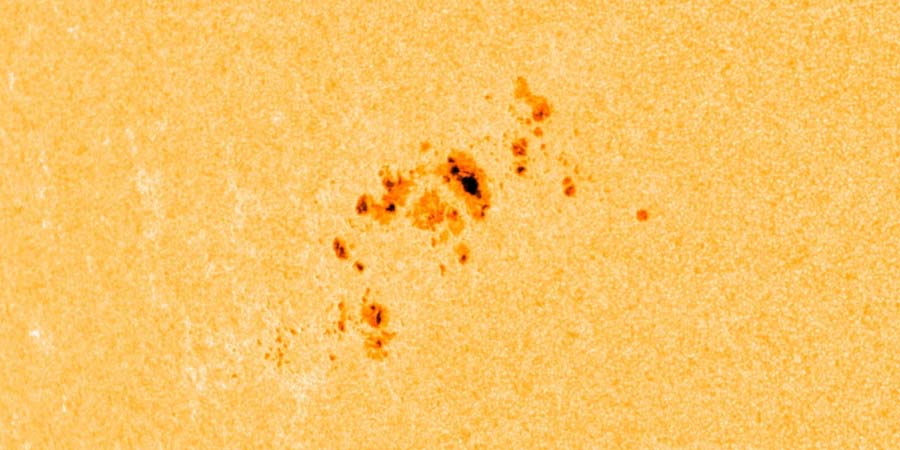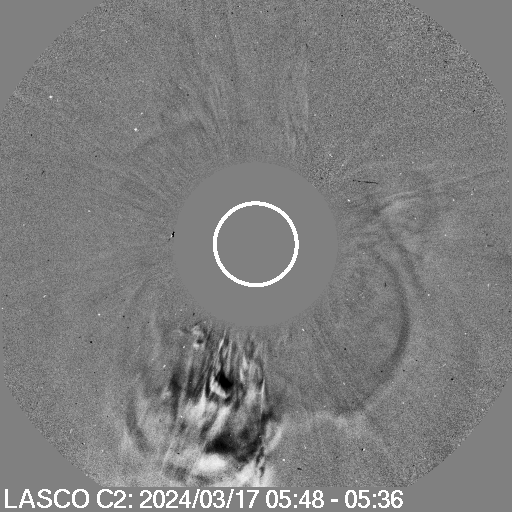Sunspot region 3615, G1 watch
Wednesday, 20 March 2024 14:57 UTC

March has been a relatively quiet month thus far. We did had a moderate G2 geomagnetic storm back on the 3rd of March but other than a couple of unremarkable M-class solar flares not much has happened considering we are probably nearing the peak of Solar Cycle 24. But... we do have two topics to cover today. Sunspot region 3615 is an interesting sunspot region currently on the earth-facing disk and a minor G1 geomagnetic storm watch is in effect for today and tomorrow.
Sunspot region 3615
First of all we have sunspot region 3615. Sunspot region 3615 is a relatively small sunspot region but it has a very interesting magnetic layout. This sunspot region is rotating towards the center of the earth-facing solar disk and could launch a earth-directed coronal mass ejection in the coming days if we are lucky. Or unlucky depending on who you ask. The sunspot region has a complex Beta-Gamma-Delta (despite it still being assigned as a Beta-Gamma region by NOAA) layout and already produced four M-class events including an M7.4 solar flare today at 07:36 UTC. These flares however were impulsive and did not launch any coronal mass ejections. But who knows, this could very well change if the region develops further. A sunspot region to keep an eye on in the days ahead!
G1 geomagnetic storm watch
A coronal mass ejection is expected to arrive later today coming from a filament eruption launched on 17 of March. Geomagnetic conditions up to Kp5 (G1) are expected after the plasma cloud arrives. Enhanced geomagnetic conditions up to a Kp-value of 5 are expected to persist tomorrow (21 March) as well.

Thank you for reading this article! Did you have any trouble with the technical terms used in this article? Our help section is the place to be where you can find in-depth articles, a FAQ and a list with common abbreviations. Still puzzled? Just post on our forum where we will help you the best we can!
Latest news
Latest forum messages
Support SpaceWeatherLive.com!
A lot of people come to SpaceWeatherLive to follow the Sun's activity or if there is aurora to be seen, but with more traffic comes higher server costs. Consider a donation if you enjoy SpaceWeatherLive so we can keep the website online!

Space weather facts
| Last X-flare | 2024/12/08 | X2.2 |
| Last M-flare | 2024/12/22 | M1.0 |
| Last geomagnetic storm | 2024/12/17 | Kp5+ (G1) |
| Spotless days | |
|---|---|
| Last spotless day | 2022/06/08 |
| Monthly mean Sunspot Number | |
|---|---|
| November 2024 | 152.5 -13.9 |
| December 2024 | 103.3 -49.2 |
| Last 30 days | 115.4 -40.8 |


